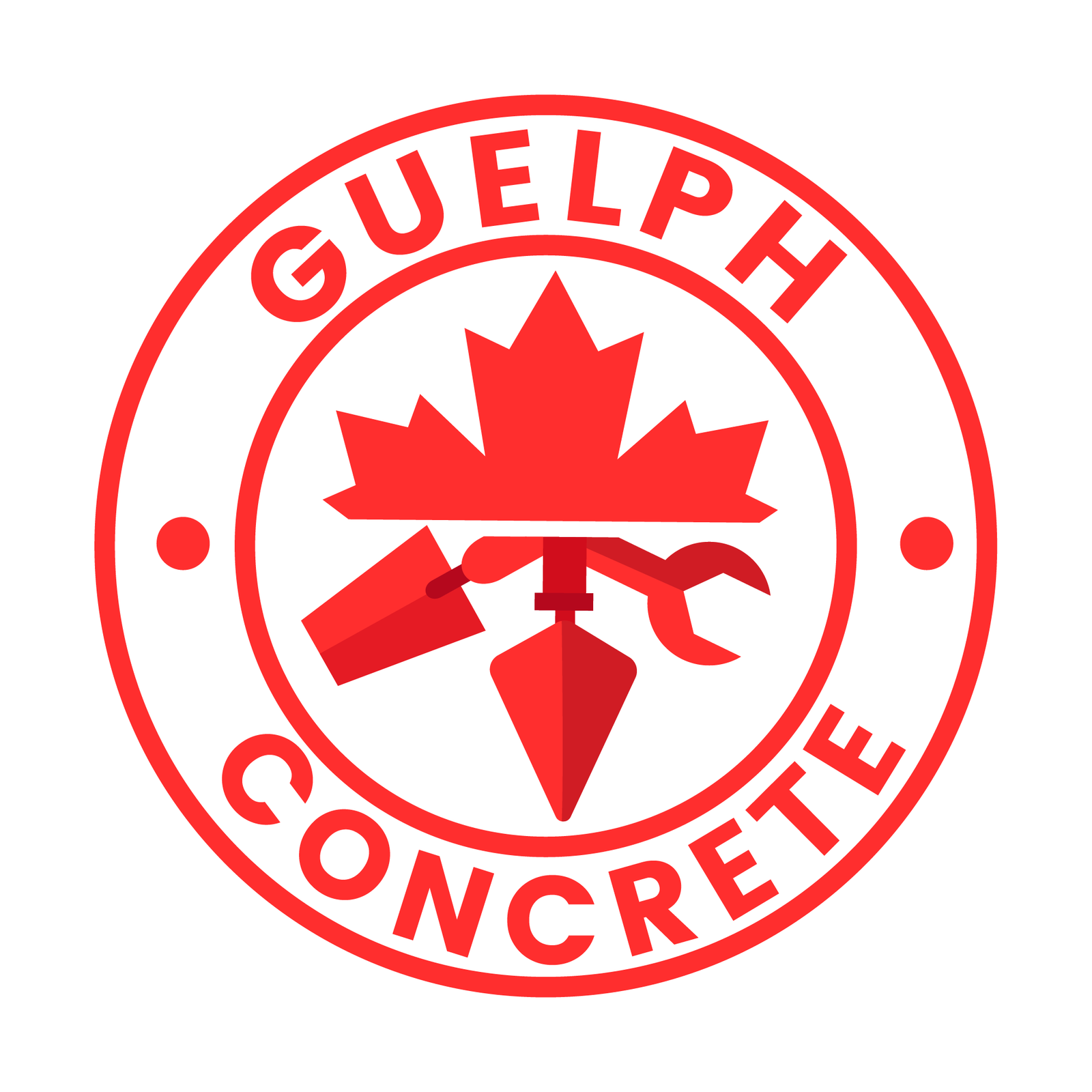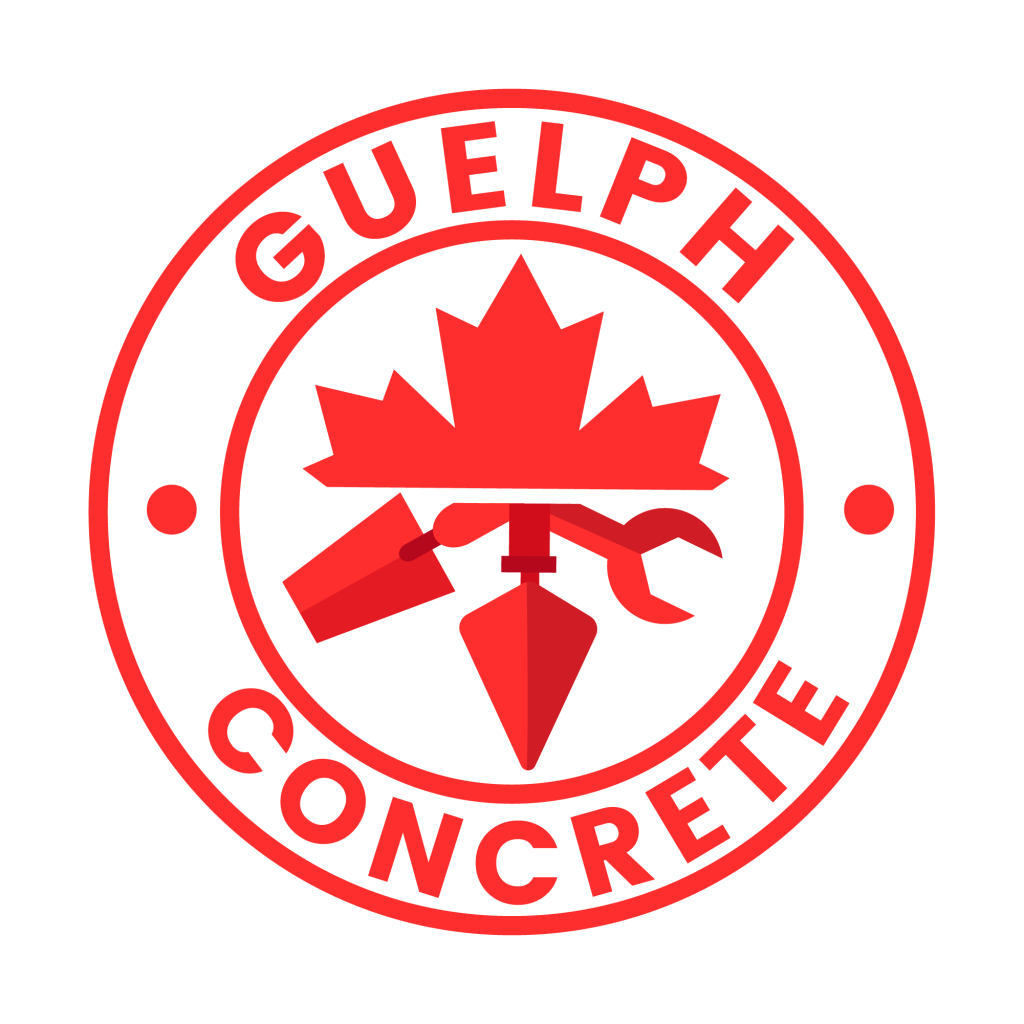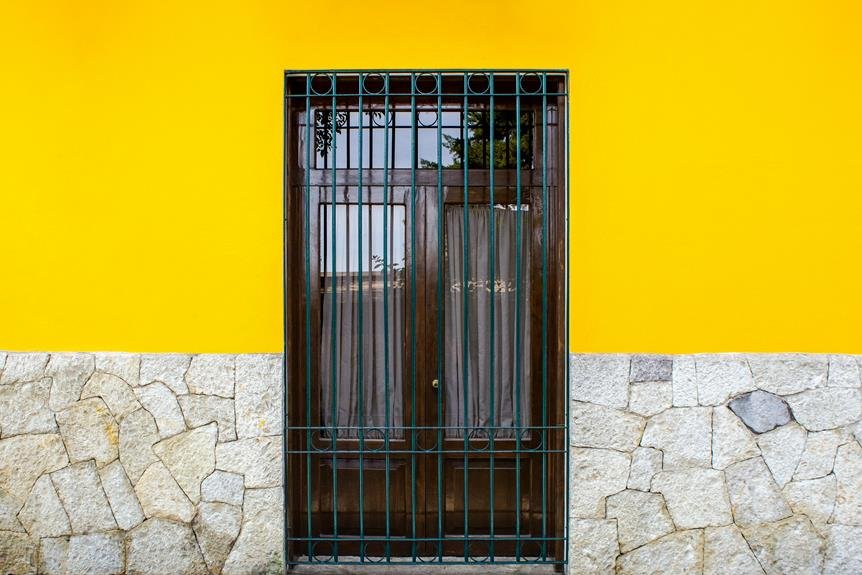Waterproofing an exterior foundation wall in Guelph, Ontario is a crucial step in protecting your home from water damage. At Guelph Concrete LTD, with over 15 years of experience, we start by thoroughly examining any cracks or signs of water damage.
To ensure proper drainage, we begin by digging a trench around the foundation that slopes away from the structure.
Using durable materials like Bakor WP200 membrane, we coat the clean, dry walls to provide robust waterproof protection. The key to an effective seal is rolling out the membrane from the bottom up, carefully overlapping the edges to ensure complete coverage.
Additionally, we install a comprehensive drainage system with gravel and weeping tiles to redirect water to a sump pit.
By following these steps, Guelph Concrete LTD guarantees a solid waterproof barrier for your home. Protect your investment and avoid costly repairs by contacting us for a free estimate.
Call us today at 548-490-2074 to get started on your waterproofing project. Let’s explore how to get the job done right!
Assess the Foundation
Let’s begin by thoroughly examining the condition of the exterior foundation wall for any cracks, damage, or signs of water infiltration. A detailed foundation inspection is essential for identifying potential issues that could compromise the integrity of our waterproofing efforts.
We need to look closely for any areas where water may be pooling or seeping into the foundation. These signs of moisture detection are our first indicators that the foundation might be vulnerable.
As we carefully inspect the foundation, we should pay extra attention to structural weaknesses or vulnerabilities. Even minor cracks can become significant problems if not addressed promptly.
This step isn’t just about spotting visible damage; it’s about understanding where our foundation might be at risk and taking proactive measures.
Choose Waterproofing Materials
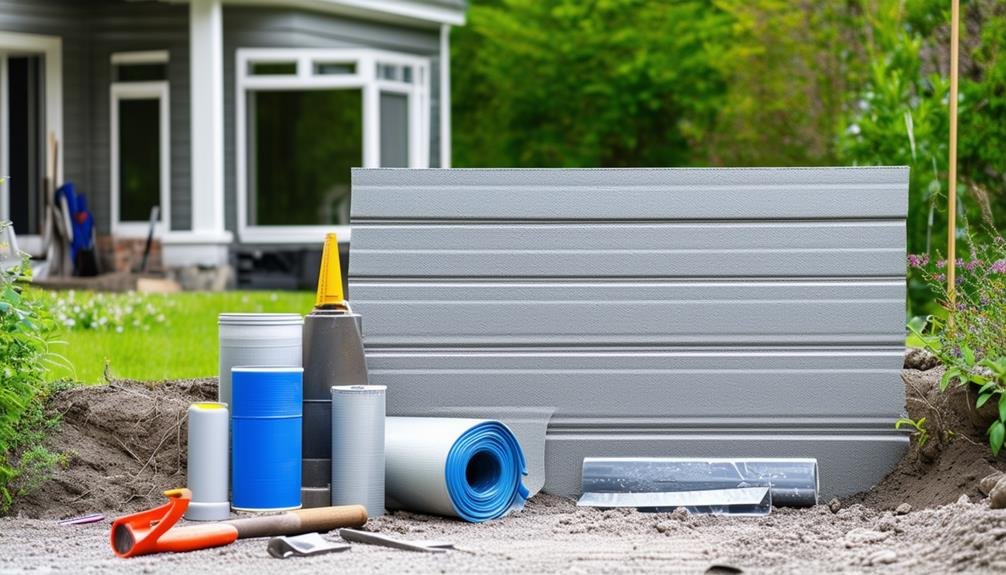
After evaluating the foundation for vulnerabilities, we must select the right waterproofing materials to guarantee strong protection. In Guelph, Ontario, Bakor WP200 waterproofing membrane is a popular choice for small exterior foundation wall projects. This high-quality membrane, combined with the Bakor WP 2000 water drainage and protection board, offers a reliable solution to prevent water entry and protect your foundation from long-term damage.
When it comes to material selection, it’s important to take into account both the effectiveness and the cost. Bakor products aren’t only durable but also come with a manufacturer’s warranty, providing peace of mind. These materials are designed to be cost-effective, offering long-term savings by reducing future maintenance requirements.
For installation tips, make sure that the foundation wall is clean and dry before applying the Bakor WP200 membrane. Proper adhesion is essential to its effectiveness. Once the membrane is in place, installing the Bakor WP 2000 protection board will enhance drainage and further safeguard against water intrusion.
Dig and Prepare the Trench
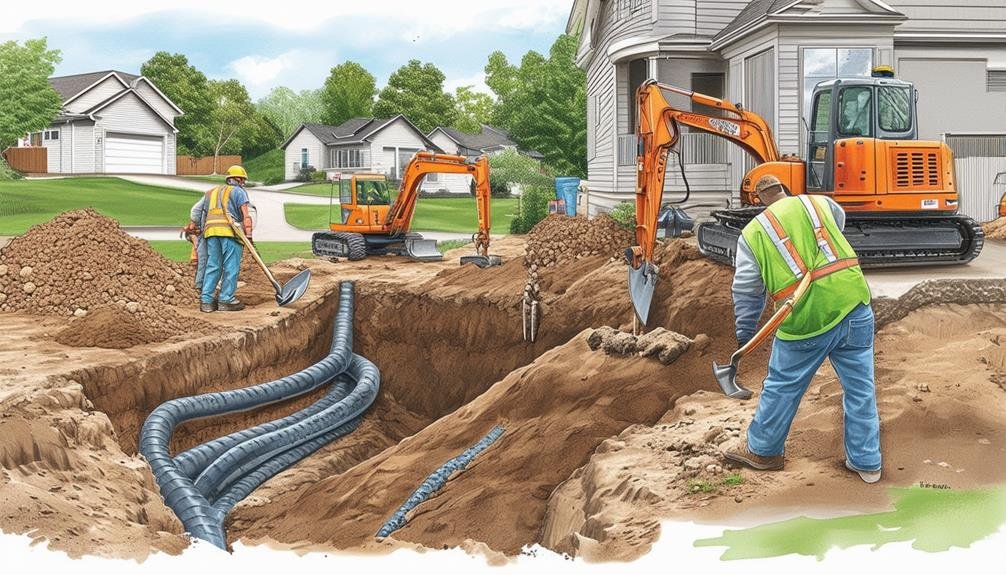
To effectively waterproof your exterior foundation wall, we need to start by excavating a trench around the perimeter to the necessary depth. This trench should be deep enough to fully uncover the foundation wall and wide enough to accommodate our waterproofing materials. The correct excavation depth is essential, as it guarantees that all potential points of water entry are accessible for treatment.
First, let’s clear any debris, roots, or obstructions from the trench to create a tidy working area. Next, we’ll slope the trench away from the foundation to encourage proper drainage and water flow. This step is vital for avoiding water accumulation near the foundation, which can result in future issues.
Here’s a quick guide to help us stay organized:
| Task | Description | Importance |
|---|---|---|
| Excavating the trench | Around the perimeter to needed depth | Ensures full exposure |
| Clearing debris | Remove roots, rocks, and obstructions | Clean working area |
| Sloping the trench | Away from the foundation | Promotes drainage |
| Ensuring trench width | Wide enough for materials | Proper application space |
| Checking soil compaction | Maintain stability | Prevents future settling |
Apply Waterproofing Membrane
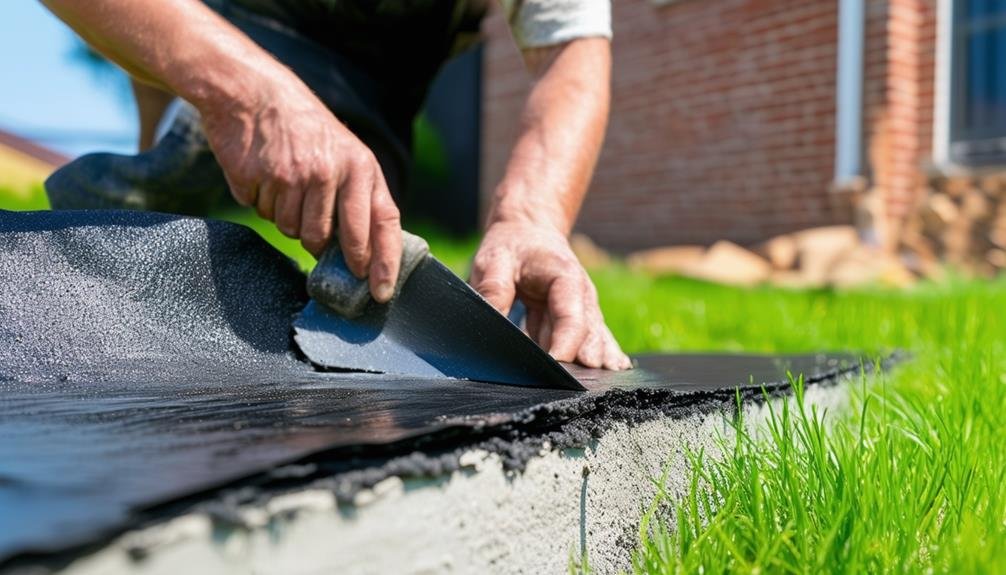
With the trench prepared and the foundation fully exposed, we can now focus on applying the Bakor WP200 waterproofing membrane to create a strong barrier against water infiltration. This step is important for protecting our exterior foundation wall from water damage and moisture penetration, especially in Guelph’s climate.
First, we need to make sure the foundation wall is clean and dry. Any debris or loose materials should be removed to guarantee the membrane adheres properly.
Now, let’s immerse ourselves in the membrane application techniques:
- Prime the Surface: Apply a primer to the foundation wall to enhance the membrane’s adhesion. This step is vital for ensuring a strong bond.
- Roll Out the Membrane: Starting from the bottom, we roll out the Bakor WP200 membrane, pressing it firmly against the wall to eliminate any air bubbles and secure a smooth application.
- Seal the Edges: Overlap the edges by at least six inches and use a roller to press down firmly, creating a continuous waterproof barrier.
The advantages of using the Bakor WP200 waterproofing membrane are significant. It provides a reliable, durable barrier against water infiltration, and it comes with a manufacturer’s warranty, giving us peace of mind.
Install Drainage System
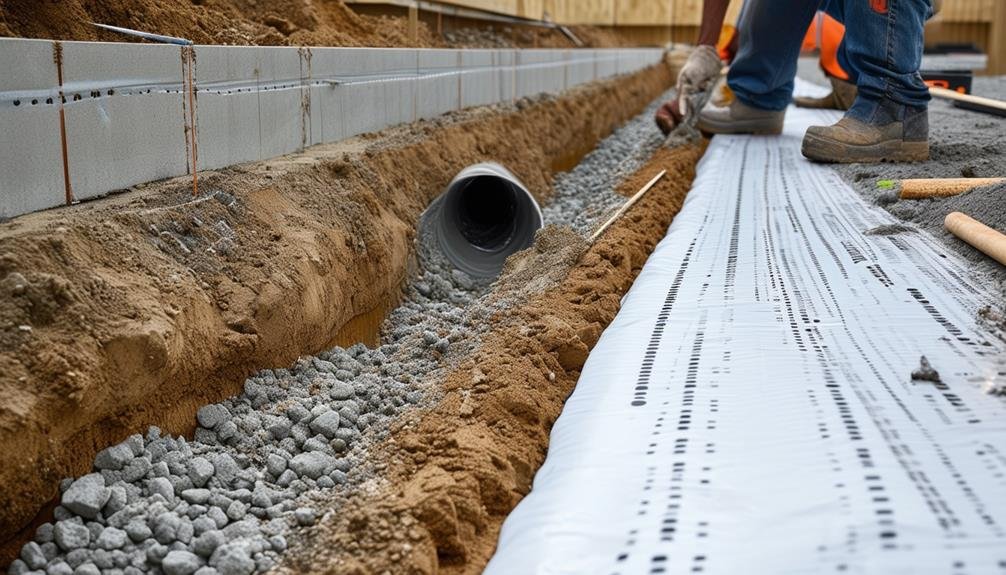
Installing a drainage system is vital for preventing water buildup around our exterior foundation wall. By using effective drainage installation techniques, we can guarantee long-term protection for our homes in Guelph, Ontario. One of the most reliable methods involves installing weeping tiles, which are perforated pipes placed around the foundation footing to collect and redirect water away.
Here’s a quick overview of the process:
| Step | Action | Purpose |
|---|---|---|
| 1 | Excavate around the foundation | Access base |
| 2 | Lay down gravel | Ensure proper drainage |
| 3 | Install weeping tiles | Collect excess water |
| 4 | Connect to a sump pit | Redirect collected water |
| 5 | Backfill with soil | Stabilize the ground |
The benefits of weeping tiles can’t be overstated. They offer an effective way to manage water, reducing the risk of infiltration into our basements. Connecting these tiles to a sump pit ensures that water is actively redirected, preventing it from pooling around the foundation.
After installation, it’s essential to inspect the weeping tiles to confirm they’re functioning correctly. In case of blockages, high water pressure contractors can flush out debris, ensuring peak performance. By following these drainage installation techniques, we can protect our homes and maintain a dry, secure foundation.
Frequently Asked Questions
How Do I Waterproof My Foundation Walls From Outside?
We start by excavating around the foundation, repairing any concrete cracks. Then, we apply a waterproof membrane, ensuring proper drainage solutions. Landscaping adjustments help direct water away. This all-encompassing approach keeps our basements dry and protected.
How Do You Waterproof an Exterior Stone Foundation?
We’ve successfully used Bakor WP200 on our stone foundation. First, we applied the membrane, then added Bakor WP 2000 boards for exterior waterproofing. This method guarantees long-term protection and keeps our foundation dry and secure.
What Is the Best Waterproofing for Exterior Foundation Walls?
We believe the best waterproofing for exterior foundation walls involves combining Bakor WP200 membrane and Bakor WP 2000 board. These effective foundation waterproofing strategies offer robust protection, ensuring our homes stay dry and secure.
How Do You Seal a Foundation Wall From the Inside?
We can seal a foundation wall from the inside using interior solutions that focus on moisture prevention. By installing a closed interior system, we effectively control water, reduce pests, and maintain basement humidity below 45%, ensuring a dry, healthy home.
Conclusion
In wrapping up, we’ve assessed the foundation, chosen our materials, dug the trench, applied the membrane, and installed the drainage system.
By taking these steps, we’ve safeguarded our home against water damage, secured our foundation’s longevity, and boosted our property’s value.
Let’s take pride in our efforts and relish the peace of mind that comes with a well-protected foundation.
We’ve done the hard work, and now we can enjoy the lasting benefits.
